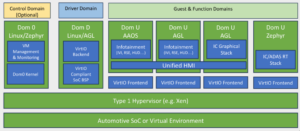
![]() Ryan Daws is a senior editor at TechForge Media with over a decade of experience in crafting compelling narratives and making complex topics accessible. His articles and interviews with industry leaders have earned him recognition as a key influencer by organisations like Onalytica. Under his leadership, publications have been praised by analyst firms such as Forrester for their excellence and performance. Connect with him on X (@gadget_ry), Bluesky (@gadgetry.bsky.social), and/or Mastodon (@gadgetry@techhub.social)
Ryan Daws is a senior editor at TechForge Media with over a decade of experience in crafting compelling narratives and making complex topics accessible. His articles and interviews with industry leaders have earned him recognition as a key influencer by organisations like Onalytica. Under his leadership, publications have been praised by analyst firms such as Forrester for their excellence and performance. Connect with him on X (@gadget_ry), Bluesky (@gadgetry.bsky.social), and/or Mastodon (@gadgetry@techhub.social)
Hugging Face and Pollen Robotics have unveiled Reachy Mini, an open-source robot designed to bring AI into our homes and classrooms.
Reachy Mini is built for fun, creativity, and connection. The goal is to give everyone – from a developer tinkering with the latest AI to a parent sharing a coding project with their kids – a real, physical robot to experiment with.
Your open-source AI robot companion
What differentiates Reachy Mini is its focus on personality and interaction. The robot is designed to be expressive, with a head that can look around, a body that can turn, and even two little antennas that move to give it character.
The robot comes as a kit, so you get the hands-on fun of building your own companion right from the start. You can then start bringing your Reachy Mini to life using Python. And if you’re not a Python user, support for JavaScript and Scratch is on the way. Even before your robot arrives, you can start coding and testing your ideas in a virtual simulation, so you can hit the ground running.
Thanks to its deep integration with Hugging Face, you can tap into advanced open-source models for speech and vision. Want to give your AI robot companion a unique personality? You can do that. It “sees” with a wide-angle camera and listens through microphones, making it a true platform for audio-visual AI projects.
The entire project is built on an open-source foundation. The hardware, the software, it’s all open for you to explore and build upon. The best part is that you’re not alone. You’ll be joining a huge community of creators on the Hugging Face hub, where you can download new behaviours for your robot or share your own creations with the world.
Right from day one, Hugging Face says there will be more than fifteen starter behaviours ready to go—so you can play and learn straight out of the box.
Which Reachy Mini is for you?
To make it accessible to as many people as possible, there are two versions of Reachy Mini available:
- Reachy Mini Lite: For $299/£220 (plus taxes and shipping), this version is perfect for getting started. It connects directly to your Mac or Linux computer (with Windows support coming soon) and comes with two microphones and a camera to begin your AI journey. Deliveries for the Lite version are set to start in late summer 2025.
- Reachy Mini (Wireless): For those who want the full, untethered experience, the $449/£331 (plus taxes and shipping) version is a completely standalone system. It packs its own digital brain, a Raspberry Pi 5, and comes with Wi-Fi, battery power, four microphones for better hearing, and an accelerometer. This version will begin rolling out in batches from the autumn of 2025 and into 2026.
Both versions are currently in an early development phase, and the creators say they are openly sharing them “as-is” to get feedback from early adopters as part of their mission to democratise open-source AI robots.
See also: ABB expands robotics portfolio in China with three new families


Want to learn about the IoT from industry leaders? Check out IoT Tech Expo taking place in Amsterdam, California, and London. The comprehensive event is co-located with other leading events including Cyber Security & Cloud Expo, AI & Big Data Expo, Intelligent Automation Conference, Edge Computing Expo, and Digital Transformation Week.
Explore other upcoming enterprise technology events and webinars powered by TechForge here.
Tags: ai, artificial intelligence, development, hugging face, open-source, robotics, robots



